From Freshfield station we turned towards the sea, down Formby’s “Millionaire’s Row”, Victoria Road. It was a fine warm autumnal day, with the leaves beginning to fall and to rustle underfoot. We were aiming for the National Trust Formby Pinewoods reserve, hoping to see Red Squirrels.
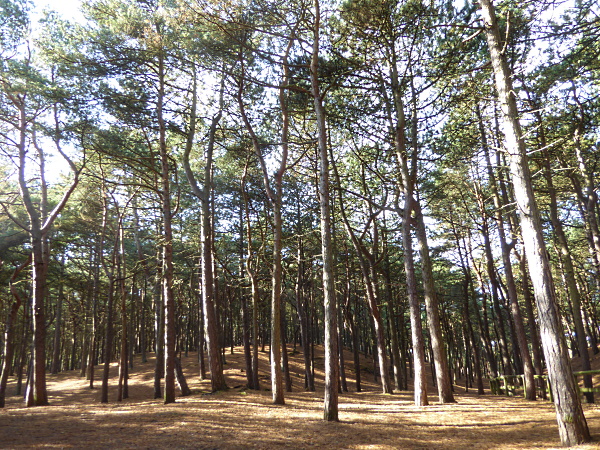
There was an ominous sign saying that four dead squirrels have recently been found showing signs of Squirrel Pox. People should report any sick or dead, red or grey squirrels, and we are asked not to leave food. We had a good look around, but didn’t see any red squirrels at all. More worryingly, there were no squirrel-chewed pine cones. There were thousands of cones underfoot, but all were untouched.
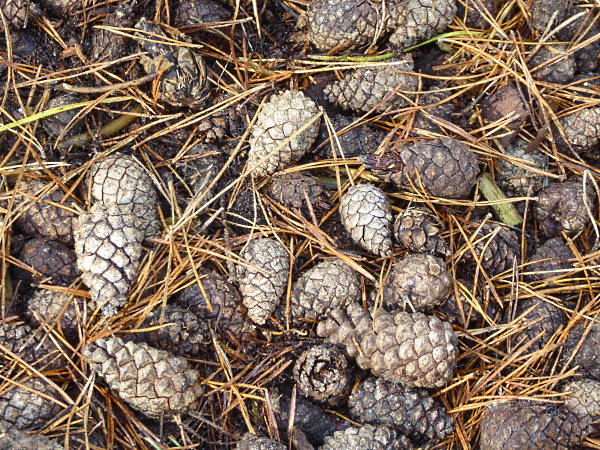
Nearer the beach we found just one that had been slightly dismantled, but it wasn’t typical of the damage caused by a healthy animal. This looks like very bad news for the current population of red squirrels. Are they all sick and dying?
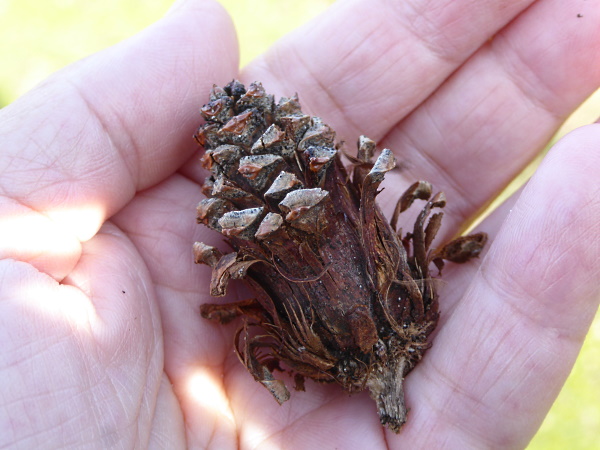
The other claim to fame of this area is its history of asparagus farming. Pioneering farmers like Jimmy Lowe of Pine Trees farm started growing asparagus here in about 1925, and Formby asparagus is now exported to top restaurants all over the world.
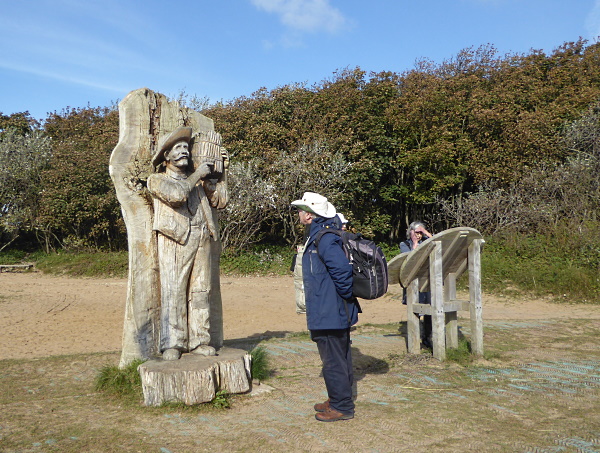
We hoped to see some late butterflies today, but there were none, just a few distant dragonflies including a mating pair. The only flowers in bloom that we could find were Common Cranesbill and Evening Primrose. Not many birds either, just Crows, Wood Pigeons and various gulls, with a flock of Jackdaws in the woods, and a single Curlew seen from the train in a farmer’s field. We made the hard climb over the soft sandy dunes to the beach, coming out just north of Formby Point.

The tide was coming in and was near its top. The storm last week had thrown lots of shells and other bits of sea creatures up to the top of the beach and we made a small collection.

There were plenty of Razor shells, possibly of three species. The dark bivalves are Mussels, while the pale triangular shells are probably Rayed Trough Shells. There were a few broken whelks, and surprisingly few Cockles. The odd big one was broken, and only the tiny ones (half an inch, 1.5 cm) were intact. What kind of heavy sea would leave the thin Rayed Trough Shells untouched but break the tougher Cockles? One small Cockle at the middle right of the picture appears to have a “driller killer” hole in it. We also found a piece of coal (there was a coal ship wrecked off here once upon a time), a very small flattened Sea Potato and some oddments with Barnacles attached. Some of the Barnacles might still have been alive, so we made sure they went into the water.
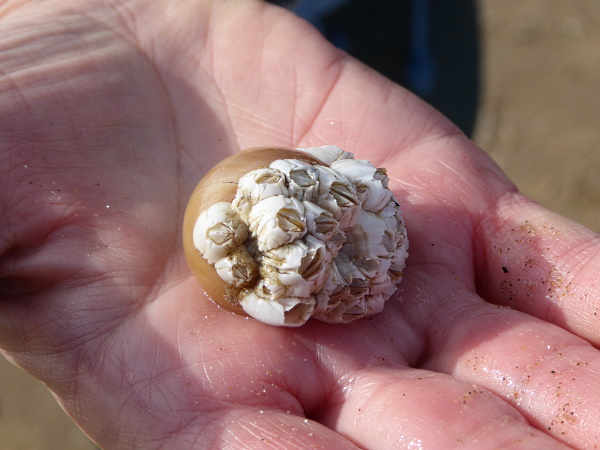
Public transport details: Train from Central at 10.23, arriving Freshfield at 10.55. Returned from Freshfield on the train at 2.40, arriving Liverpool 3.10.
